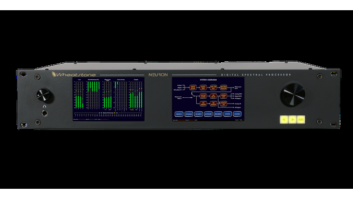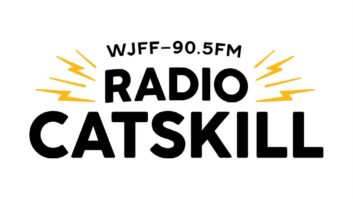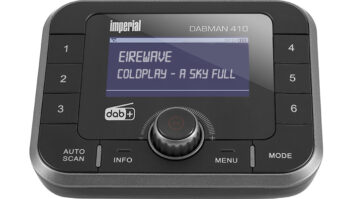When we talk about audio processing, normally, we refer to the final, on-air processors for AM or FM or HD Radio.
There are plenty of other processing needs around a radio station: The need to make studio microphones sound more consistent, mic to mic; the leveling-out of caller audio; keeping audio going back to a remote broadcast consistent; and last but not least, the “gain-riding” function for program audio outputs. While many staffers may think you can “fix it in the mix,” it’s more effective to avoid relying on that method.
Let’s consider some different contexts that may require processing.
AGC FOR STL TRANSMISSION
For FM stations, it’s common to have the final audio processor and stereo generator at the transmitter site. The diminishing cost of high-speed IP connectivity coupled with multiplex transmission via IP is changing that, but that’s a topic for another time.
Many stations still use T1 shelves, or digital radios, or a combination thereof, to get their audio to the far end. The dynamic range of both types of systems is high enough so that AGC is not needed in many cases. In practice though, two effects are often encountered:
- Level inconsistencies in the program outputs
- Program audio levels that are too low for consistent PPM encoding
I find it aggravating that a majority of board ops (at least half of them) cannot effectively do something as simple as riding gain on a console. Though, with the wide dynamic range of a typical digital STL, this isn’t as much of a real issue as it is an annoyance. The inconsistent PPM encoding is a serious issue; it’s important to have consistent and high levels going into a PPM encoder. While the original PPM encoders didn’t have a way of indicating that, the new generation does.
If you are using a channel that has limited dynamic range and emphasis, then consider using a processor with pre-emphasis peak limiting ahead of it. This is not as common as it once was; the most likely application would be a monaural, analog STL radio.
The Aphex 320D Compellor is probably the most well-known, general purpose AGC and limiter found around radio stations. It’s a wideband device, well-suited for “gain-riding.” The 320D’s limiter acts on peaks that shoot beyond average program levels making them easy to handle for any analog or digital recording system, or (non-emphasized) transmission channel, such as that provided by a typical T1 codec, IP codec or digital radio STL.

The Inovonics 261 Utility Processor is an all-inclusive system for general audio normalization and level management. It combines the functions of gated, gain-riding AGC, dynamic range compression and independent broadband and high-frequency program peak limiting. The 261 features AES-digital and L/R analog inputs; digital and analog outputs are available simultaneously. Digital input sample rates are detected automatically, while multiple output sample rates can be easily selected from the front panel.

The Orban 6300 includes analog and dual AES3 digital inputs and outputs; the digital input and digital outputs have sample-rate converters that can operate at 32 kHz, 44.1 kHz, 48, 88.2, and 96 kHz. The pre-emphasis characteristic and output levels are separately adjustable for the analog and digital outputs. The 6300’s outputs can be independently configured to be the output of the AGC or the output of the multiband compressor/limiter, all configurable to use or bypass look-ahead limiting. This makes the 6300 well-suited for driving an STL.

AGC FOR TALKBACK AND MIX-MINUS APPLICATIONS
For more than 20 years, we’ve had the capacity for talkback from the studio to a remote broadcast location because of the duplex nature of ISDN, and now because of IP.
As someone who has done more than his fair share of remotes, I can tell you that inconsistent levels in talkback are annoying at best. It’s bothersome to continually have to raise and lower PA levels because of lack of level management at the far end. (This is an unfortunate symptom of the board op problem I already mentioned.)
For talkback purposes, a fast-acting AGC and limiter combination is good, especially if the talkback audio interrupts a program feed. For the mix-minus feed to a remote, a fast-attack, slow-release style of AGC is effective. This AGC would, of course, be placed ahead of the transmission path back to the remote site.
I mentioned it earlier, but the Aphex Compellor is a common choice to fulfill the gain-riding needs of talkback and mix-minus functions.
CALLER AUDIO
While it is true that the most-up-to-date telephone systems for caller audio include audio processing, let’s face it — you may not have one. Perhaps you are a generation or two back. If so, you may want to consider some audio processing in line with the receive direction, as well as the send direction.
When 2G cellular communications came in to being, and PCS phones were introduced, caller audio took a major step backwards. There is no comparison between today’s cellphones and the old analog cellphones or landlines; however, since nearly everyone calls the station today via their 3G mobile phone, we’re left with a problem to solve.
What can be done to help make caller audio better? Processing with some (or, hopefully, all) of the following features can help:
For the send-to-caller audio, you’ll likely find that downward expansion also helps. This will be a needed feature in a mic processor, which we’ll discuss below.
The dBx 286s is an economical choice for processing caller audio. It’s designed to be a mic processor, but 1/4-inch TRS Line Input can accept balanced/unbalanced signals from your telephone hybrid. You can use insert jack to interface between the preamp inputs (mic or line) and the signal processing sections to “loop out” to external processors (such as EQ). Separate threshold and ratio controls on the Expander/Gate are useful for mitigation of noise in the open speakerphone mode.

The Rane DC22S comes to mind as well for this particular application; its two-channel compressor/downward expander system (the channels can be slaved) with balanced inputs/outputs via XLR or T-R-S connectors.

MICROPHONE PROCESSING
I’m an advocate of mic processing used in moderation. The reality is that most jocks want to maintain a certain sound in their headphones, and many will feel uncomfortable if they don’t hear it.
My experience is that for a jock to sound good on-air (meaning on a radio) nothing is more important than the right microphone; however, in many, many cases, jocks can’t listen over the air and end up hearing just the local mic and mic processor combination. So if you want to keep them happy, this is something you should try to accommodate.
At minimum, mic processing features should include:
- Variable gain input stage
- AGC
- Parametric EQ
- Downward expansion
- Variable gain output stage
A common mistake is that too much low-frequency EQ is used to satisfy many jocks. This gets back to the issue of what they sound like in their own headphones versus what they sound like over the radio.
When tweaking up mic processing, I like to find whatever pleasing characteristic I can in a jock’s voice and emphasize it with parametric EQ. Set AGCs so that there is some “action” during speech. Remember that you can get away with a high compression ratio on voice. The higher you go, though, the more you’ll need to use make-up gain on the output.
Downward expansion can be very helpful, if you happen to have multiple people in a room that sounds lively, or if the mics are physically close together so that they essentially bleed over between one another. Set your downward expansion threshold so that when jock B is talking, jock A’s mic has been turned down by the downward expansion feature.
From an operational standpoint, I find it very distracting for the talent if I have to go in to a studio to adjust mic processing either while they are doing a shift, or even if we have an appointment.
This is 2016. Mic processors have remote access. In fact, this feature makes it much easier for both parties. I would only remind you that, from wherever you adjust the mic processing remotely, make sure you can hear the feed prior to any delay. Trying to make tweaks, and then waiting to hear them after the delay period just doesn’t work too well.
The Omnia Voco 8 contains eight microphone preamplifiers, each switchable to line-level analog, four stereo AES/ EBU inputs (eight mono), Livewire+/AES67 AoIP inputs along with Line level analog, AES/EBU, and Livewire+/AES67 AoIP outputs. Its processing features include de-essing, a three-band noise gate, a four-band EQ, three-band AGC, and peak limiting. It also comes pre-loaded with factory presets designed for male or female voices. Set up and configuration can be done via its Ethernet port (the Omnia Remote Gateway software works with Microsoft Windows XP SP3, Windows 7 (32 and 64 bit), Server 2008 R2, and Debian Linux), or alternatively, via the front panel, which includes a combination rotary encoder, navigation joystick, and pushbutton control.

The PreSonus RC 500 is a single channel, with solid-state mic preamplifier with three-band semi-parametric equalizer (with switching relays for hard bypass), with a front-panel 1/4-inch instrument and rear-panel XLR microphone and line inputs with Input Select switch. It also features a VU meter with selectable output level/gain reduction display; an analog insert with balanced send and return, and balanced output on XLR and 1/4-inch TRS connectors.


Symetrix is another well-known manufacturer of processors. The Jupiter series comes in three different input/output options: Jupiter 4 (four in, four out), Jupiter 8 (eight in, eight out) and Jupiter 12 (12 in, four out). Inputs and outputs are analog, using 3.81 mm terminal blocks. Nominal output level is +4 dBu with 20 dB of headroom. Configuration is done via an embedded webserver; processing features include variable input and output gain; de-essing; multi-band EQ; downward expansion, compression, and peak limiting.

The Wheatstone M4IP-USB is a four-channel DSP-based BLADE-3 voice processor with four completely independent channels of voice processing in an IP-networked rack unit. The unit combines four microphone preamps, four channels of embedded microphone processing (with a four-section equalizer with high and low shelving EQ and two bands of fully parametric EQ, high and low pass filters, and de-esser and expander functions). Also included are four stereo AES digital outputs. It can be used in a WheatNet-IP network, or independently. The M4IP-USB is also AES67 compatible. The preamps and processors are accessed and controlled from any point on the LAN via its Windows-based GUI.

HEADPHONE PROCESSING
A dozen years ago we often didn’t use profanity delays (at least on music stations), and HD Radio hadn’t shown up on many radio stations. Jocks typically listened off-air and heard exactly what everyone else was hearing.
Today, we have delays set up in a serial fashion: Profanity delays are followed by STLs that might contribute some delay, followed by the HD delay.
The bottom line is that listening over-the-air is not nearly as common as it once was.
Perhaps the most negative effect of this is jocks can no longer accurately hear how their mix sounds to listeners. Music beds can be too low or too high, drowning out other sources, or one song fades out and gets buried by the intro of another.
I know I railed on poor board-operating earlier, but the reality is that these jocks can’t hear what they’re doing. What would be very helpful would be a headphone processor that emulates the over-the-air processing to the degree that a mix could be heard by the person running the board, allowing them to properly mix sources so that listeners can hear everything clearly.
I have made attempts with various late model audio processors (all DSP-based) that I’m told have delays too short to be noticed by those talking through them. In practice, I have not found this to be true. We’ve resorted to older generation digital processors (20+ years old) and older analog FM processors to end their useful lives as headphone processors.







